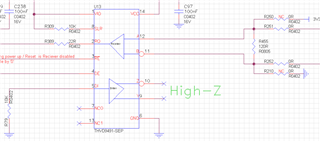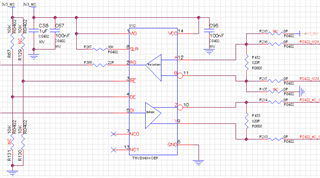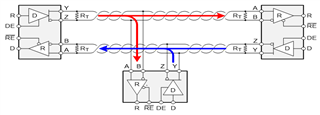Tool/software:
Hi,
I'm using THD9491-SEP as RS422 transceiver and have some questions:
A) For not used transmit side, I assume that DI should be connected to GND while Z, Y should be left floating - please confirm

B) Another question is about the 120R resistors:

At the EVB document the 120R resistors appears as NC.
Assuming it will be connected, it is 0805 resistors.
At the DS, the bus voltage can be up to 40V. If so, the 0805 resistor seems too low (power wise).
When does the 120R should be assembled?
What is the recommended power - Is it 40^2/120 = 13.33W ? This seems unreasonable.
On the other hand, can you explain why EVB 50 ohm is 3.9W?
Thanks,
Zeev.



